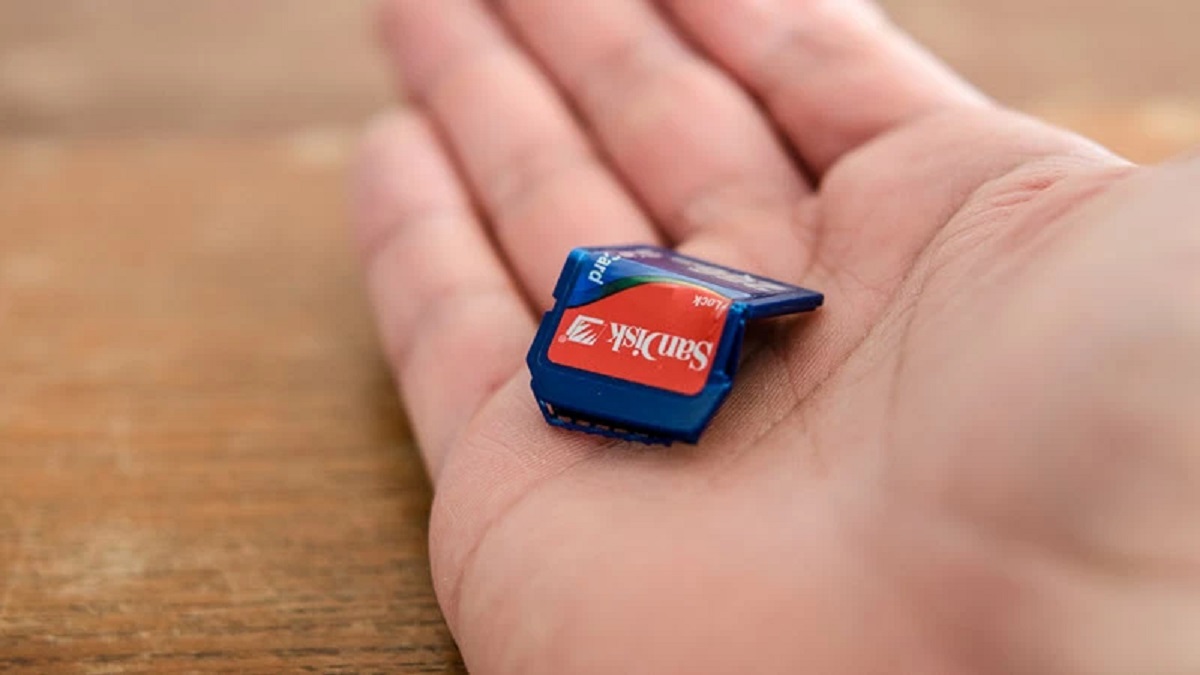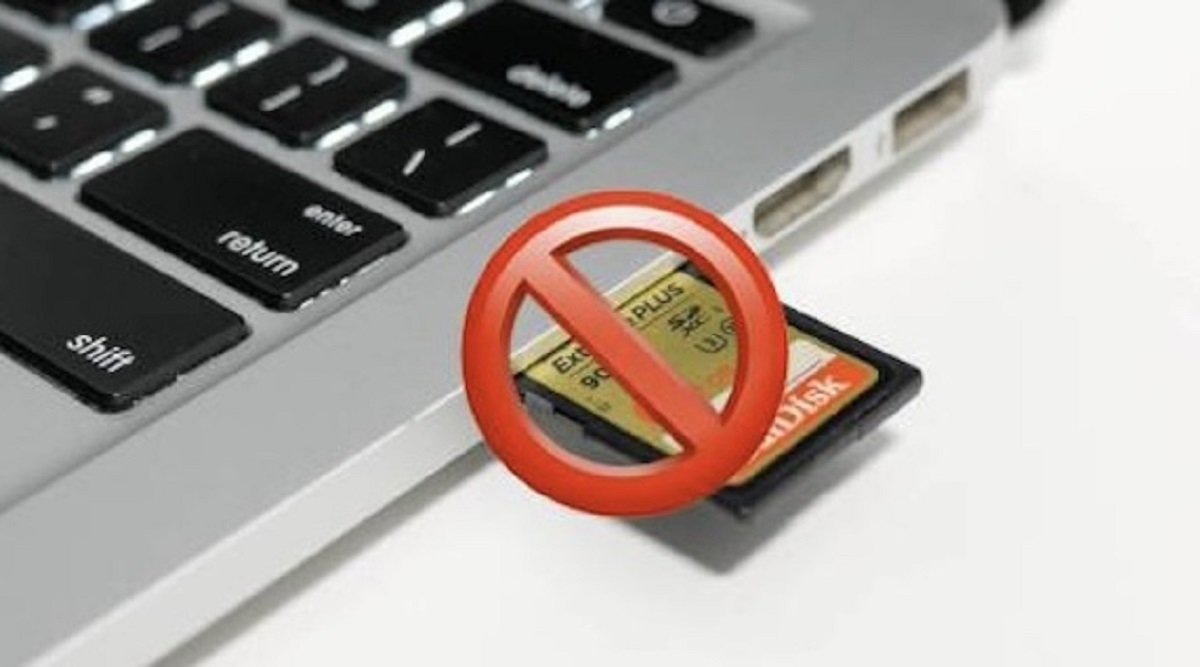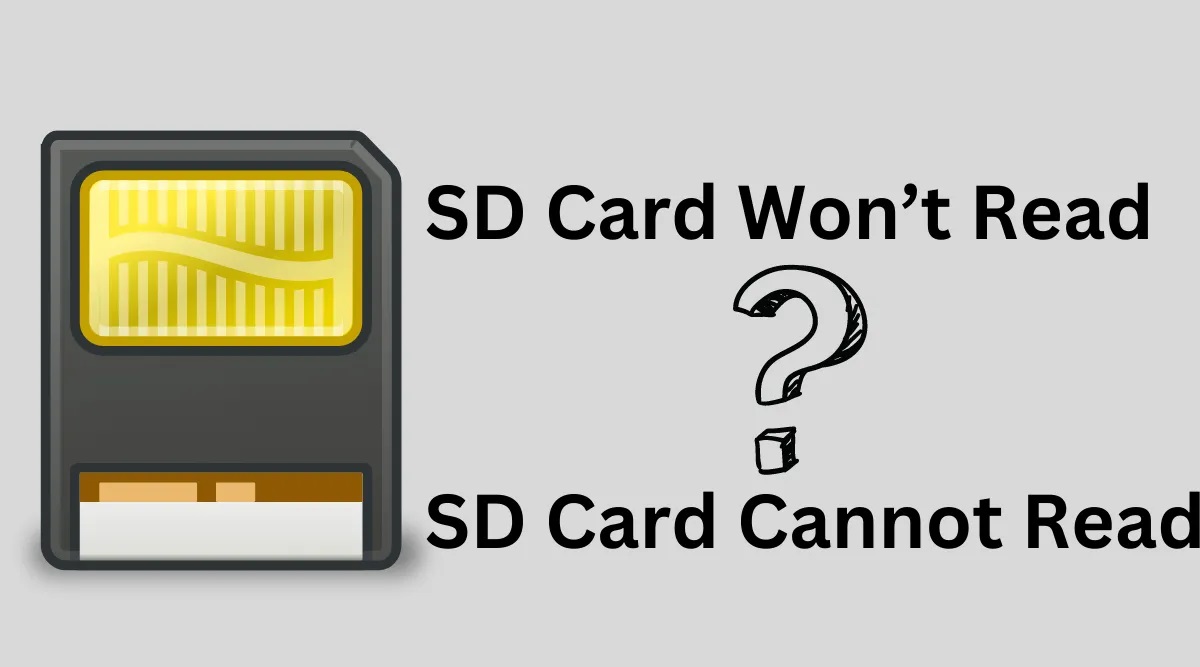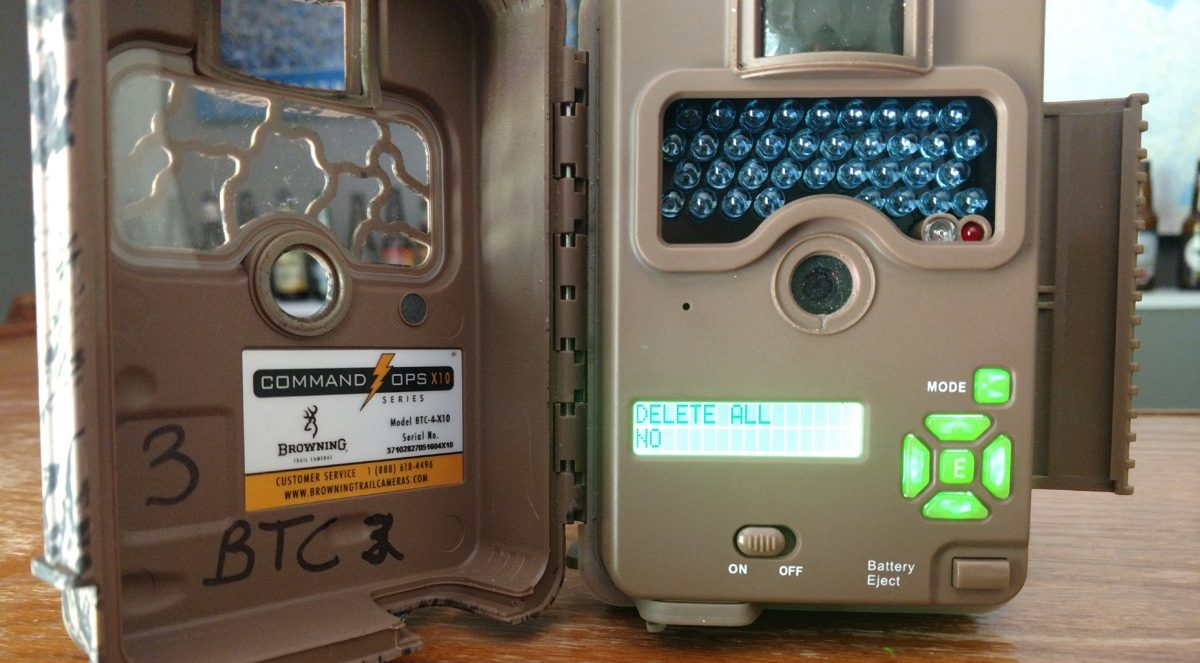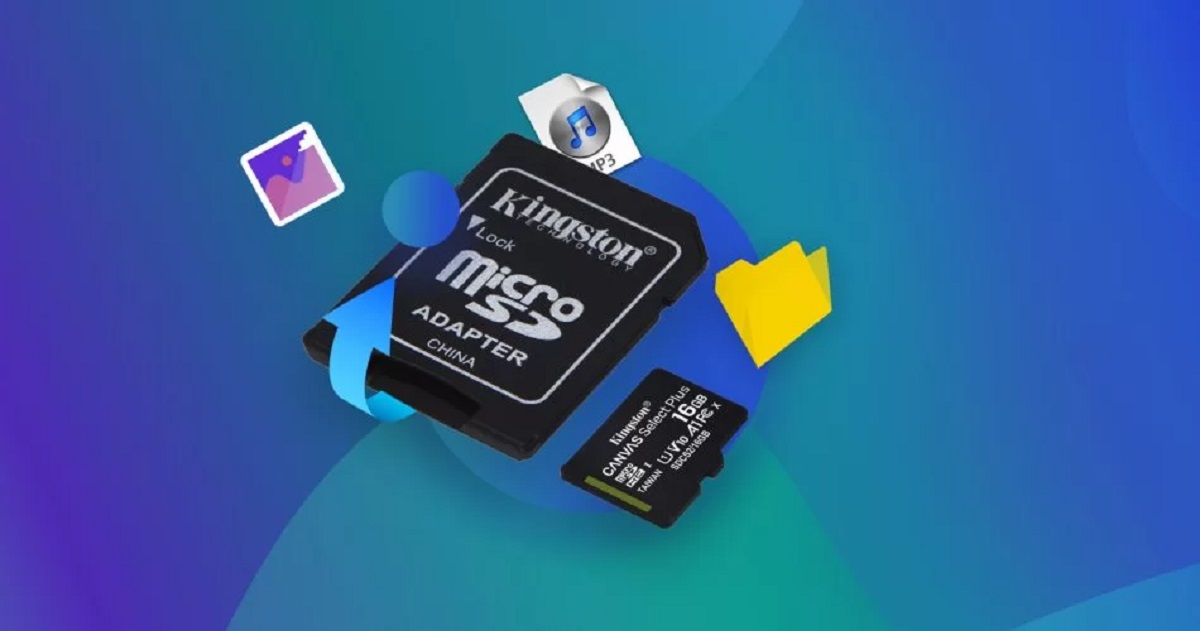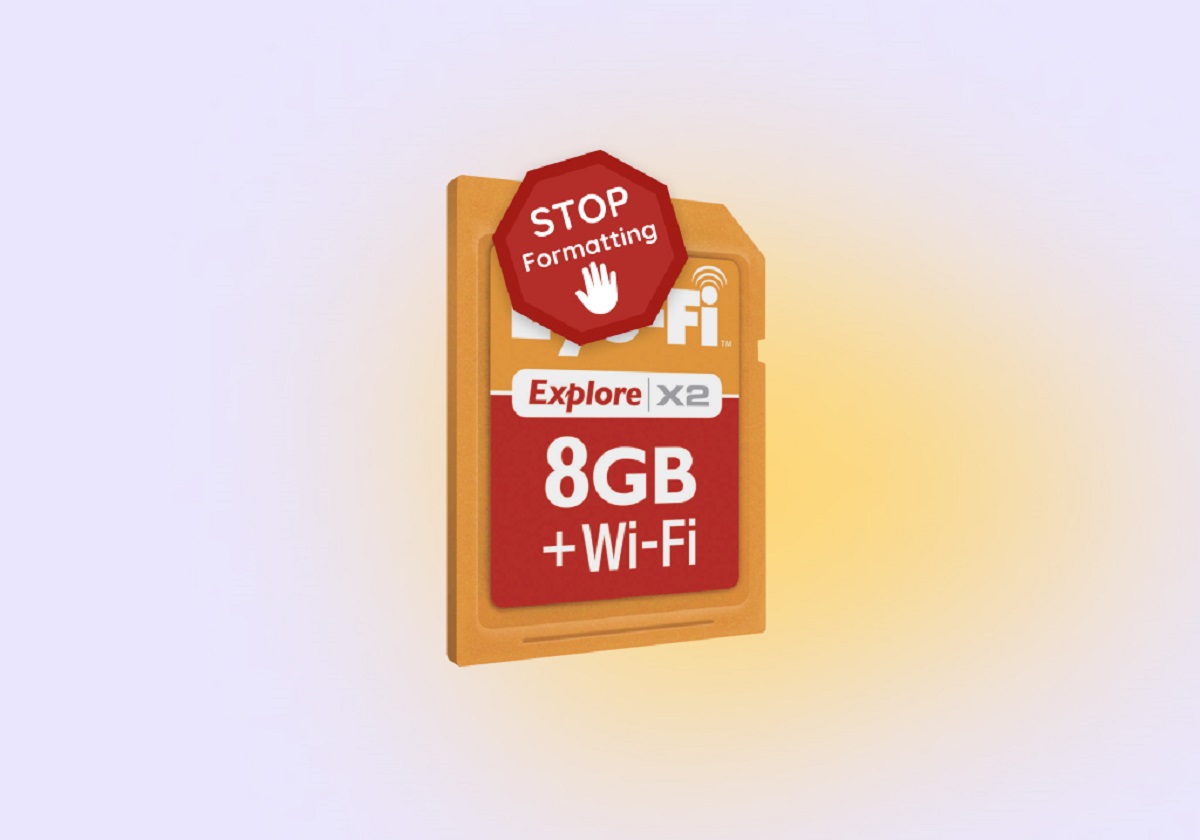Introduction
An SD card is a popular storage medium used in various electronic devices such as cameras, smartphones, and gaming consoles. It offers convenience and flexibility in storing and transferring data. However, SD cards are not immune to corruption, which can cause you to lose important files and images.
Dealing with a corrupted SD card can be a frustrating experience. Fortunately, there are steps you can take to repair and format the card, potentially restoring it to its optimal functionality.
In this article, we will explore the causes of SD card corruption, the steps to assess the damage, and various methods to repair or format a corrupted SD card. Additionally, we will provide tips on preventing future SD card corruption.
It is essential to note that attempting to repair a corrupted SD card may have risks, such as permanent data loss or further damage to the card. Therefore, it is always recommended to make a backup of your data before proceeding with any repair or formatting methods.
Now, let’s delve into the details and learn how to handle a corrupted SD card with efficiency and care.
Understanding Corrupted SD Cards
Before diving into the methods of repairing a corrupted SD card, it is crucial to comprehend what exactly a corrupted SD card is. A corrupted SD card refers to a storage device that has encountered errors or malfunctions, rendering it unable to function properly.
There are several ways in which an SD card can become corrupted. One common cause is improper ejection from a device, such as removing the card while it is still being accessed or while files are being transferred. This can disrupt the file system on the card and lead to corruption.
Other factors that can contribute to SD card corruption include physical damage, malware or virus infection, power failures during read or write operations, formatting errors, and software compatibility issues.
When an SD card becomes corrupted, it may exhibit various signs of dysfunction. These can include file read or write errors, inaccessibility of stored data, slow performance, or the inability to format the card. Sometimes, the device itself may not recognize the presence of the SD card at all.
It is important to understand that a corrupted SD card does not necessarily mean that the card itself is permanently damaged or unusable. In many cases, the file system or data structure on the card may have become corrupted, causing the issue.
Having a good understanding of the causes and symptoms of SD card corruption will help you to tackle the problem effectively. In the following sections, we will explore the steps to assess the damage and different methods to repair or format a corrupted SD card.
Causes of Corrupted SD Cards
There are several potential causes that can lead to the corruption of an SD card. Understanding these causes can help you take preventive measures and reduce the risk of data loss. Let’s explore some common reasons why SD cards become corrupted:
- Improper Ejection: One of the most common causes of SD card corruption is removing the card abruptly without safely ejecting it from the device. This can disrupt the file system and result in data corruption.
- Physical Damage: Damage to the SD card itself, such as exposure to water, extreme temperatures, or physical impact, can lead to data corruption or make the card unreadable.
- Power Failure: If a power failure occurs during a write operation to the SD card, it can cause file system errors and corruption. This often happens when the card is being used to transfer files or when a device unexpectedly shuts down.
- Malware or Virus Infection: SD cards can be vulnerable to malware or virus attacks, especially if they are used with multiple devices or connected to an infected computer. These malicious programs can corrupt the data stored on the card.
- Software Compatibility Issues: Incompatibilities between the SD card and the device or operating system it is being used with can cause data corruption. It is important to ensure that the card is compatible with the device and that the necessary drivers or software are up to date.
- Formatting Errors: Incorrectly formatting an SD card or using incompatible formatting methods can lead to corruption. It is essential to follow the recommended formatting guidelines for your specific device or operating system.
By understanding the potential causes of SD card corruption, you can take precautions to minimize the risk. Properly ejecting the card, protecting it from physical damage, using reliable antivirus software, and ensuring software compatibility are some of the measures you can take to safeguard your data.
Now that we have explored the causes of SD card corruption, let’s move on to the next section, which will guide you through the process of assessing the damage to your SD card.
Assessing the Damage
Before attempting to repair or format a corrupted SD card, it is crucial to assess the extent of the damage. This will help you determine the best course of action and avoid potential data loss. Here are the steps to assess the damage to your SD card:
- Check for Physical Damage: Inspect the SD card for any visible signs of physical damage, such as cracks, scratches, or bent pins. If you notice any such damage, it is likely that the card is physically impaired, and recovery may not be possible without professional assistance.
- Test the Card with Different Devices: Insert the SD card into multiple devices, such as cameras, computers, or card readers, to see if it is recognized. If the card is not detected by any device, it may indicate severe corruption or a damaged card. However, if the card is recognized but cannot be accessed or shows errors, it is likely to be a logical corruption issue.
- Use Data Recovery Software: If the card is recognized but you are unable to access your files or they appear to be corrupted, you can try using data recovery software. These programs can help recover lost or inaccessible data from a corrupted SD card. However, keep in mind that these tools may not be able to successfully retrieve all files, especially if the card is severely damaged.
By going through these steps, you will gain a better understanding of the condition of your SD card. If the damage is minimal and the card is still recognized by devices, there is a higher likelihood of successful repair or recovery. However, if the card exhibits severe physical damage or is not detected at all, professional assistance may be required.
Next, we will explore different methods to repair or format a corrupted SD card, depending on the nature of the damage and the available resources.
Backup Your Data
Before attempting any repair or formatting on a corrupted SD card, it is crucial to back up your data. This step is essential to ensure that you don’t lose any important files or precious memories in the process. Here’s how you can backup your data from a corrupted SD card:
- Use a Card Reader: Insert the corrupted SD card into a card reader and connect it to your computer.
- Copy Files to Computer: Open the file explorer on your computer and navigate to the SD card. Select the files or folders you want to back up, and simply copy them to a folder on your computer’s hard drive.
- Cloud Storage: Another option is to upload your files to a cloud storage service, such as Google Drive, Dropbox, or iCloud. This will provide an additional layer of backup and ensure that your important files are stored securely online.
- External Hard Drive: If you have an external hard drive, you can also copy the files from the SD card to the external drive for backup purposes.
- Multiple Backups: It is always a good practice to create multiple backups of your data. Consider making copies on different storage devices or using a combination of methods, such as both cloud storage and an external hard drive.
Creating a backup of your data is crucial because attempting to repair or format a corrupted SD card can sometimes result in permanent data loss. By backing up your files, you can have peace of mind knowing that your data is safely stored elsewhere.
Once you have successfully backed up your data, you can proceed with the methods to repair or format the corrupted SD card. In the upcoming sections, we will explore various methods depending on your operating system and the severity of the card’s corruption.
Using Disk Utility to Repair Corrupted SD Cards
If you are using a Mac computer, you can utilize the Disk Utility tool to repair a corrupted SD card. Disk Utility is a built-in utility that allows you to manage and repair various storage devices, including SD cards. Here’s how you can use Disk Utility to repair a corrupted SD card:
- Insert the SD Card: Insert the corrupted SD card into the card reader on your Mac computer.
- Open Disk Utility: Go to “Applications” > “Utilities” > “Disk Utility” to launch the Disk Utility application.
- Select the SD Card: In the Disk Utility window, locate the SD card on the left-hand side under the “External” or “Devices” section. Click on the SD card to select it.
- Click “First Aid”: At the top of the Disk Utility window, click on the “First Aid” button. This will initiate the process of verifying and repairing the disk.
- Wait for the Repair: Disk Utility will now run a diagnostic check to detect and fix any errors on the SD card. Wait for the repair process to complete. This may take some time depending on the size and condition of the card.
- Check Repair Status: Once the repair process is finished, Disk Utility will display a message indicating the repair status. If any errors were found and successfully repaired, it will be mentioned in the message. If no errors were found, it may indicate that the card is not corrupted or that the issue lies elsewhere.
- Eject the SD Card: After the repair process is complete, you can safely eject the SD card from your Mac computer.
Using Disk Utility can often fix common issues and repair file system errors on a corrupted SD card. However, if the corruption is more severe or if Disk Utility fails to repair the SD card, alternative methods may be required.
In the next section, we will explore the steps to repair corrupted SD cards using the Command Prompt on Windows or the Terminal on Mac.
Using Command Prompt (Windows) or Terminal (Mac) to Repair Corrupted SD Cards
If you are using a Windows computer, you can utilize the Command Prompt, while Mac users can use the Terminal to repair a corrupted SD card. The Command Prompt and Terminal are command-line interfaces that allow you to execute specific commands for various tasks. Here’s how you can use these tools to repair a corrupted SD card:
- Insert the SD Card: Insert the corrupted SD card into the card reader on your computer.
- Open Command Prompt or Terminal: On Windows, open the Command Prompt by pressing the Windows key + R, then typing “cmd” and pressing Enter. On Mac, open the Terminal by going to “Applications” > “Utilities” > “Terminal”.
- Identify the SD Card: In the Command Prompt or Terminal window, type the command “diskpart” (Windows) or “diskutil list” (Mac) and press Enter. This will display a list of available disks and volumes.
- Select the SD Card: Locate the SD card in the list of disks and volumes based on its size and properties. Note the disk number or identifier associated with the SD card.
- Repair the SD Card: In the Command Prompt (Windows) or Terminal (Mac), type the command “chkdsk /f X:” (Windows) or “diskutil repairVolume /dev/diskXsY” (Mac), replacing “X” with the disk number or identifier of the SD card. Press Enter to start the repair process.
- Wait for the Repair: The Command Prompt or Terminal will now scan the SD card and attempt to repair any errors or corruption. Wait for the process to complete, which may take some time depending on the size and condition of the card.
- Eject the SD Card: After the repair process is complete, safely eject the SD card from your computer.
Using the Command Prompt or Terminal can be an effective way to repair common file system errors and corruption on an SD card. However, it is important to note that more severe or hardware-related issues may require professional assistance or alternative solutions.
In the next section, we will explore using third-party software as another option to repair corrupted SD cards.
Using Third-party Software to Repair Corrupted SD Cards
If traditional methods like using Disk Utility or Command Prompt/Terminal do not successfully repair your corrupted SD card, you can turn to third-party software for assistance. There are several specialized tools available that are designed to repair and recover data from corrupted storage devices. Here’s how you can use third-party software to repair a corrupted SD card:
- Choose a Reliable Software: Research and select a reputable third-party software specifically designed for repairing corrupted SD cards. Look for user reviews, ratings, and features that align with your needs.
- Download and Install the Software: Download the software from the official website or a trusted source. Follow the instructions provided to install it on your computer.
- Launch the Software: Open the installed software and connect the corrupted SD card to your computer using a card reader.
- Select the SD Card: From the software interface, select the corrupted SD card as the target device for repair or recovery.
- Follow the Software Instructions: Each software may have its own user interface and set of options. Follow the instructions provided by the software to initiate the repair process.
- Allow the Software to Repair: Depending on the software, it may perform a variety of tasks to repair the SD card, such as scanning for errors, recovering lost files, or rebuilding the file system. Allow the software to complete its tasks.
- Review the Repair Results: Once the repair process is complete, the software will typically provide a summary report or notification detailing the results. Verify if the software was able to successfully repair the SD card or recover any lost files.
- Eject the SD Card: Safely eject the SD card from your computer once the repair process is finished.
Using third-party software can be a reliable method to repair a corrupted SD card, especially when traditional methods do not yield satisfactory results. However, keep in mind that not all software guarantee a complete repair or recovery, and there may be limitations depending on the severity of the card’s corruption.
In the upcoming section, we will discuss the process of formatting a corrupted SD card as a last resort to restore its functionality.
Formatting the Corrupted SD Card
If all attempts to repair a corrupted SD card have been unsuccessful or if the card is severely damaged, formatting the card may be the last resort to restore its functionality. Formatting will erase all data on the SD card, so it is crucial to have a backup of your important files before proceeding. Here’s how you can format a corrupted SD card:
- Insert the SD Card: Insert the corrupted SD card into the card reader on your computer.
- Open File Explorer (Windows) or Finder (Mac): On Windows, open File Explorer by clicking on the folder icon in the taskbar or by pressing Windows key + E. On Mac, open Finder by clicking on the smiley face icon in the dock or by pressing Command + Space, then typing “Finder” and pressing Enter.
- Locate the SD Card: In File Explorer or Finder, navigate to the list of available drives and devices. Locate the SD card, which is usually labeled with its volume name or size.
- Right-click (Windows) or Control-click (Mac): Right-click on the SD card (Windows) or Control-click (Mac) to open a context menu.
- Select “Format”: From the context menu, select the “Format” option. This will open the formatting window.
- Choose the File System: In the formatting window, choose the desired file system for the SD card. The available options are typically FAT32 and exFAT for compatibility with most devices.
- Assign a Volume Name: Optionally, you can assign a new volume name for the SD card.
- Start the Formatting: Click on the “Start” or “Format” button to begin the formatting process. A warning message may appear, reminding you that all data on the SD card will be erased.
- Wait for the Formatting to Complete: The formatting process may take some time, depending on the size and speed of the SD card. Once it is done, a confirmation message will appear.
- Eject the SD Card: Safely eject the SD card from your computer. It is now ready to be used again, but keep in mind that all previous data on the card has been erased.
Formatting a corrupted SD card can sometimes resolve issues that cannot be fixed through other methods. However, note that formatting is a destructive process, so it should only be used as a last resort. If the card is still not functioning properly after formatting, it may be necessary to replace the SD card.
In the next section, we will provide some helpful tips to prevent SD card corruption in the future.
Tips to Prevent SD Card Corruption
While dealing with a corrupted SD card can be frustrating, taking preventive measures can help minimize the risk of experiencing such issues. Here are some helpful tips to prevent SD card corruption:
- Properly Eject the SD Card: Always ensure to safely eject the SD card from the device before removing it. This allows the device to complete any ongoing read or write operations and reduces the chances of data corruption.
- Avoid Abrupt Removal: Do not remove the SD card while files are being transferred or while the device is still accessing it. Abruptly removing the card can disrupt the file system and lead to corruption.
- Handle with Care: Treat your SD cards with care and keep them protected from physical damage. Avoid exposing them to extreme temperatures, water, or physical impact.
- Use Reliable Devices and Card Readers: Ensure that you use compatible, reputable devices and card readers when using SD cards. Incompatible devices can introduce errors and compatibility issues that may result in corruption.
- Keep the SD Card Clean: Periodically clean the SD card and the card reader using a soft, lint-free cloth. This helps to prevent dust or debris from causing connection issues that could lead to corruption.
- Scan for Malware: Regularly scan your SD card for malware or viruses using reliable antivirus software. This can help protect the integrity of your files and prevent corruption caused by malicious software.
- Avoid Full Storage: Avoid filling your SD card to its maximum capacity. Leave some free space to prevent file fragmentation and maintain the overall performance of the card.
- Use Quality SD Cards: Invest in quality SD cards from reputable brands. Cheap, low-quality cards may have a higher chance of failure and corruption.
- Regularly Backup Your Data: It is essential to create regular backups of your important files on other storage devices or cloud storage platforms. This ensures that even if SD card corruption occurs, your data is still safe and accessible.
By following these tips, you can significantly reduce the risk of SD card corruption and ensure the longevity of your stored data. Prevention is always better than dealing with the consequences of data loss and the hassle of repairing or recovering corrupted SD cards.
Now that you have learned some preventive measures, let’s conclude the article with a summary of the key points we discussed.
Conclusion
Dealing with a corrupted SD card can be a frustrating experience, but with the right knowledge and steps, you can effectively repair or format the card and potentially restore its functionality. In this article, we explored the various aspects of handling a corrupted SD card.
We began by discussing the understanding of corrupted SD cards, including the common causes and signs of corruption. By understanding these factors, you can take preventive measures to minimize the risk of data loss.
We then delved into assessing the damage of a corrupted SD card, emphasizing the importance of checking for physical damage, testing the card with different devices, and using data recovery software to retrieve lost data.
Next, we explored several methods to repair a corrupted SD card. We covered using Disk Utility on Mac, Command Prompt (Windows), or Terminal (Mac) for repairs, and utilizing third-party software as an alternative solution.
If all else fails, we discussed the option of formatting the corrupted SD card as a last resort. However, it is crucial to remember to back up your data before proceeding with formatting as it will erase all existing files on the card.
Lastly, we provided valuable tips to prevent SD card corruption in the future. Proper handling, safe ejection, using reliable devices, regular cleaning, and maintaining free storage space are just a few measures you can take to protect your SD cards.
Remember, dealing with a corrupted SD card requires caution and patience. While the methods discussed in this article can be effective, it is important to note that severe physical damage or hardware issues may necessitate professional assistance.
By applying the knowledge and tips shared in this article, you can minimize the risk of SD card corruption and ensure the safety of your valuable data. Stay vigilant, take preventive measures, and always create backups to safeguard your digital memories and files.







